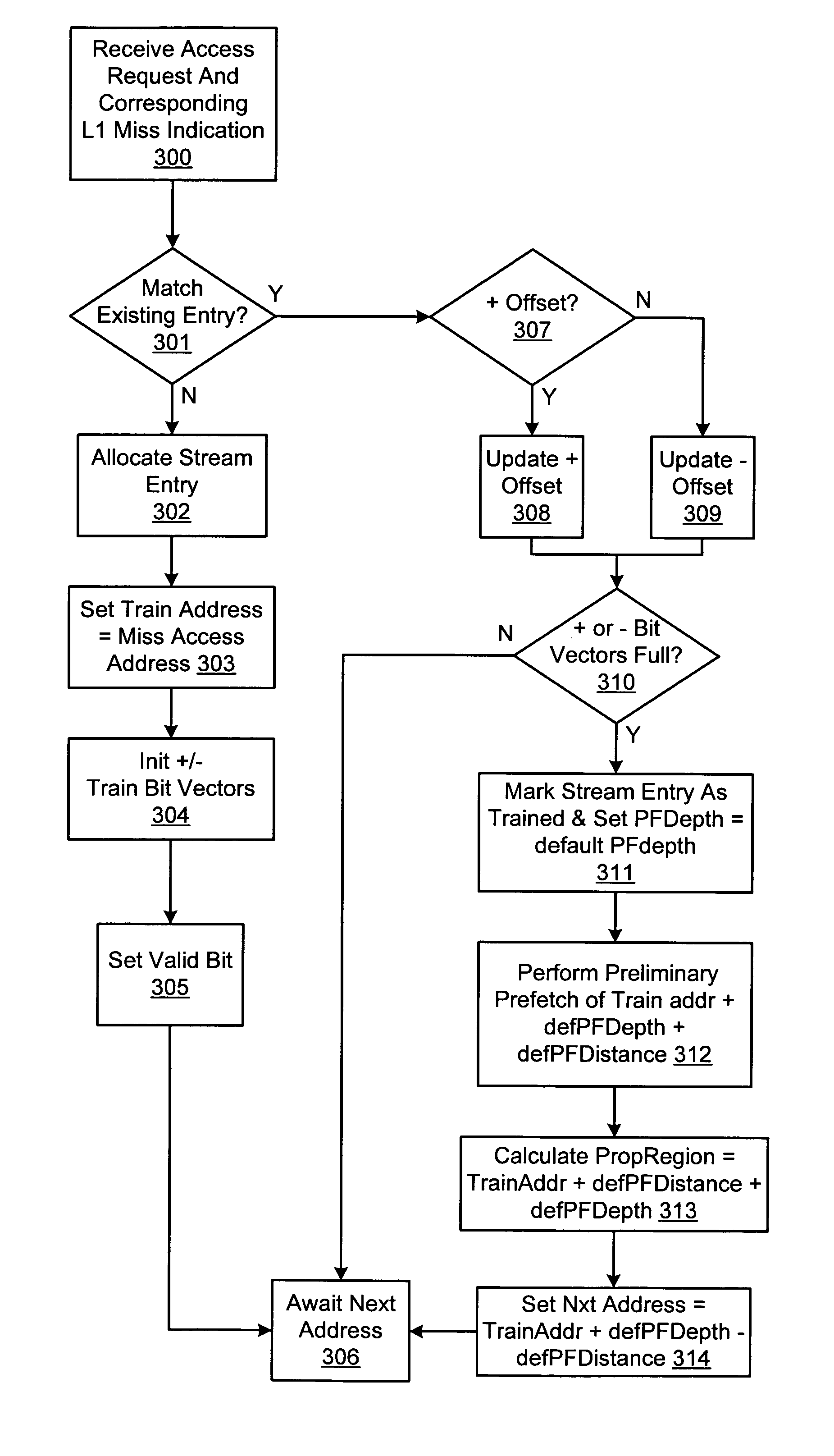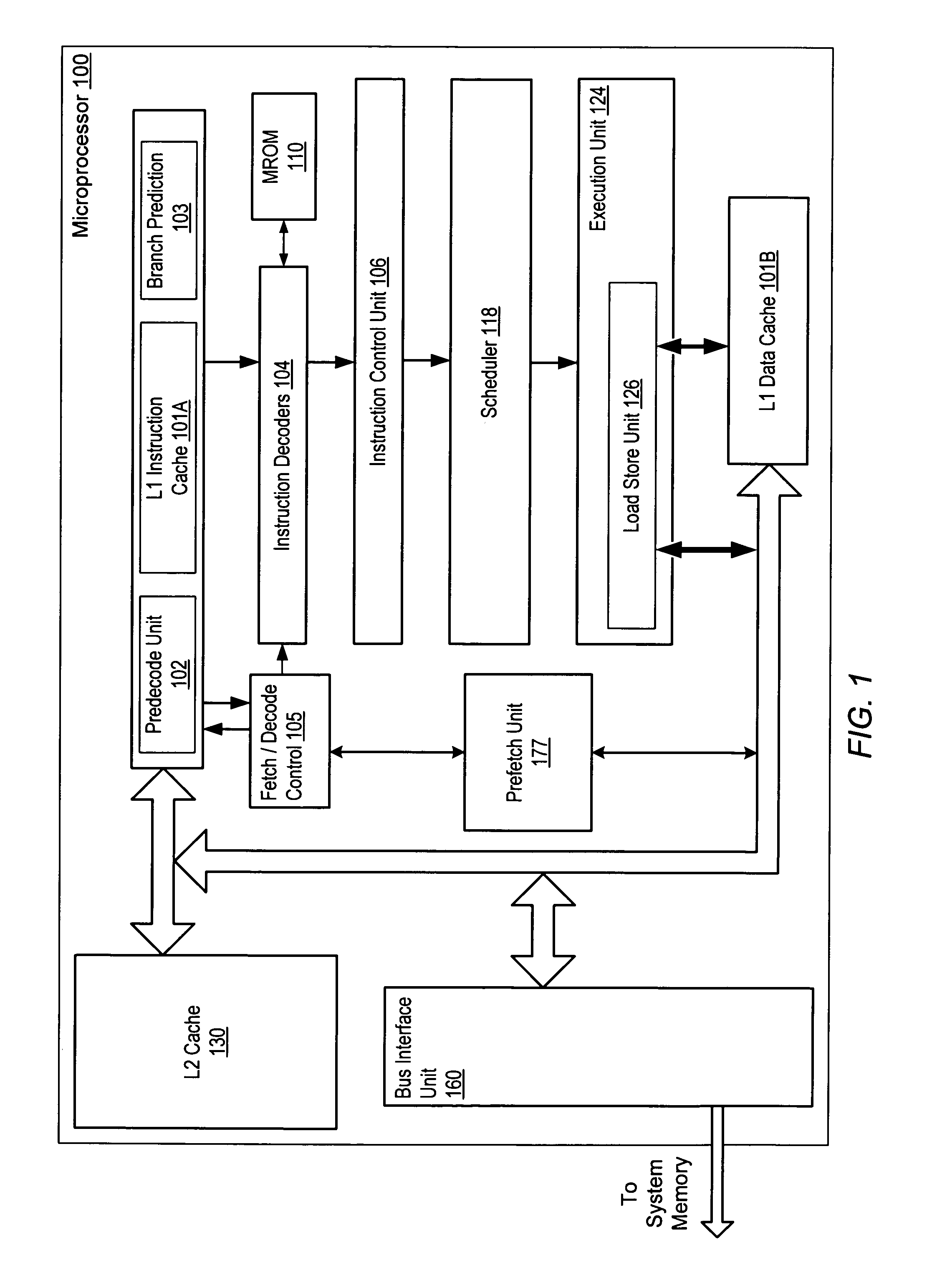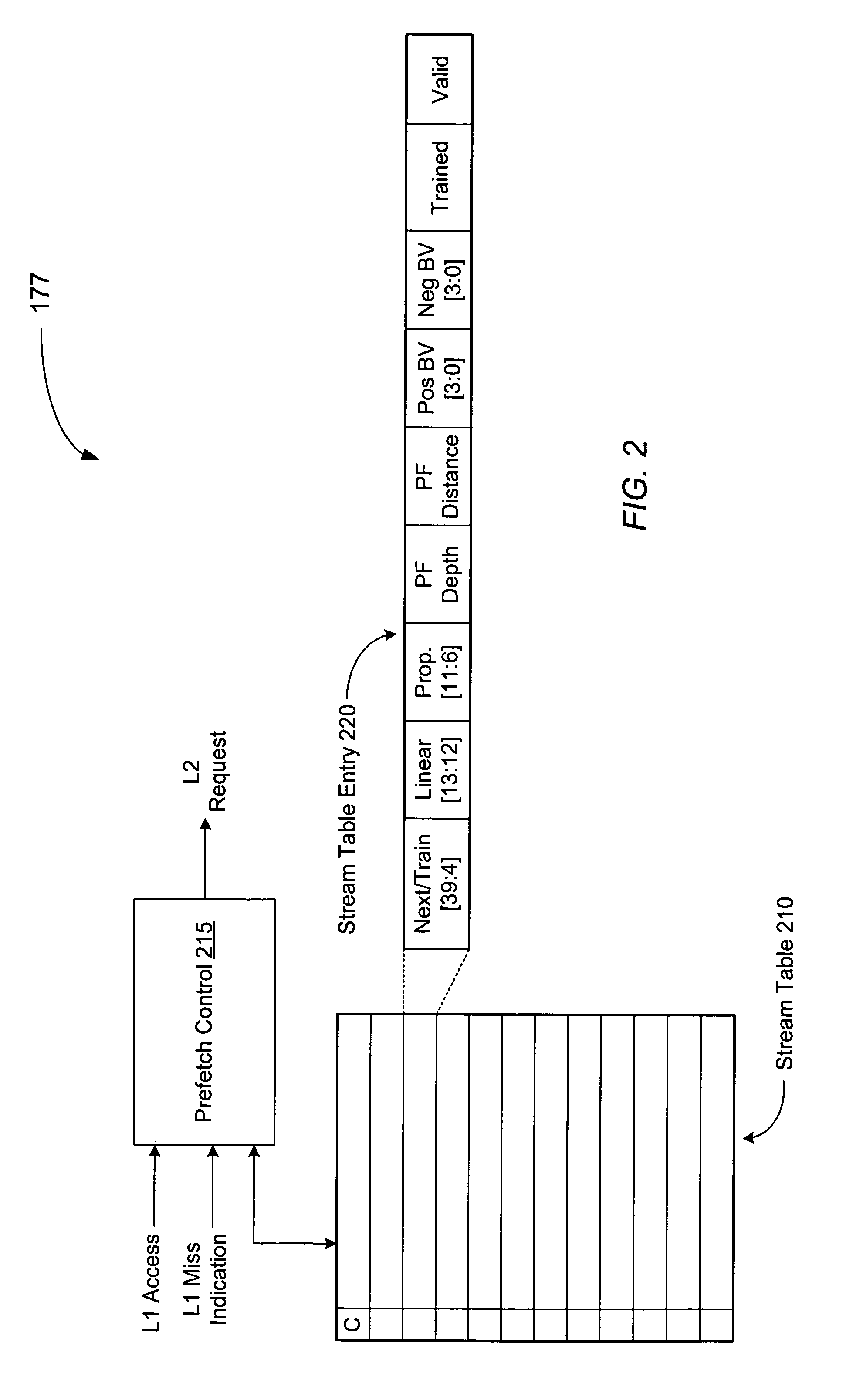Prefetch unit for use with a cache memory subsystem of a cache memory hierarchy
a cache memory and prefetch unit technology, applied in the field of microprocessors, can solve the problems of increasing memory latency, reducing the effective memory latency experienced by the processor, and increasing memory latency
- Summary
- Abstract
- Description
- Claims
- Application Information
AI Technical Summary
Benefits of technology
Problems solved by technology
Method used
Image
Examples
Embodiment Construction
[0018]Turning now to FIG. 1, a block diagram of one embodiment of an exemplary microprocessor 100 is shown. Microprocessor 100 is configured to execute instructions stored in a system memory (not shown). Many of these instructions operate on data stored in the system memory. It is noted that the system memory may be physically distributed throughout a computer system and may be accessed by one or more microprocessors such as microprocessor 100, for example. In one embodiment, microprocessor 100 is an example of a microprocessor which implements the x86 architecture such as an Athlon™ processor, for example. However, other embodiments are contemplated which include other types of microprocessors.
[0019]In the illustrated embodiment, microprocessor 100 includes a first level one (L1) cache and a second L1 cache: an instruction cache 101A and a data cache 101B. Depending upon the implementation, the L1 cache may be a unified cache or a bifurcated cache. In either case, for simplicity, i...
PUM
 Login to View More
Login to View More Abstract
Description
Claims
Application Information
 Login to View More
Login to View More - R&D
- Intellectual Property
- Life Sciences
- Materials
- Tech Scout
- Unparalleled Data Quality
- Higher Quality Content
- 60% Fewer Hallucinations
Browse by: Latest US Patents, China's latest patents, Technical Efficacy Thesaurus, Application Domain, Technology Topic, Popular Technical Reports.
© 2025 PatSnap. All rights reserved.Legal|Privacy policy|Modern Slavery Act Transparency Statement|Sitemap|About US| Contact US: help@patsnap.com



